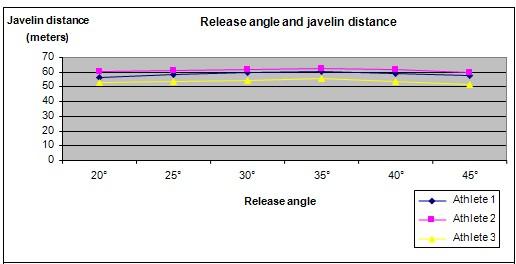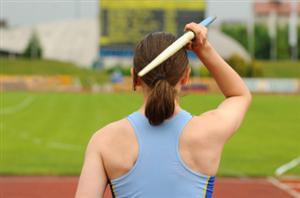Hypothesis
The javelin will travel the furthest when thrown at 45°.
Overview
Javelin throwing
The javelin was originally used as a weapon of war. The javelin used in wars of long ago was heavier than the javelin used in athletic competitions of today. The javelins of old were originally made of wood. But modern day javelin re made of graphite or aluminum. Javelin throwing is one of the contested events in many major athletic events as well as in the Olympic games.
The javelin used in the men’s athletic event weighs 800 grams and the ones used in the women’s event weighs only 600 grams. The objective of the javelin throwing event is to throw the javelin the furthest possible distance without committing a foul. To achieve this, the athlete must give a lot of consideration to the aerodynamics and biomechanical principles involved in javelin throwing.
The three important factors that determine how far a javelin travels are the release speed, release angle and the throw height. The release speed is achieved by a combination of moves that involves the entire body. The release speed must also be combined with a correct release angle to achieve greater distances. The correct release angle will produce lift and minimize drag. Lastly, the throw height is determined by the height of the athlete. Thus, taller athletes tend to have an advantage when it comes to throw height!
Scientific Terms
Aerodynamics, biomechanical, lift, drag
Conclusion
The hypothesis that the javelin will travel the furthest when thrown at 45°is proven to be incorrect. Our results show that the optimal take-off angle is 35°.
Javelin throwing is a very old athletic event. It was mentioned as early as the 8th century, in The Iliad, a literature piece written by Homer. Javelin throwing was also contested in the ancient Olympic games held in Greece. Currently, javelin throwing is one of the regular events contested in track and field events all over the world. In these events, participants use a 2.5 meter long javelin.
Also consider
The science fair project can also be repeated with a discus and shot putt.
Try to repeat the experiment on athletes of different heights.
References
Javelin throw - http://en.wikipedia.org/wiki/Javelin_throw
Technical considerations in teaching the javelin - http://www.completetrackandfield.com/teaching-the-javelin.html
Related videos
Hey there! Here are some awesome videos about this science project that we think you'll really like. They're not only super fun, but they'll also help you learn more about the science behind the project. So sit back, relax, and get ready to have some fun!!



